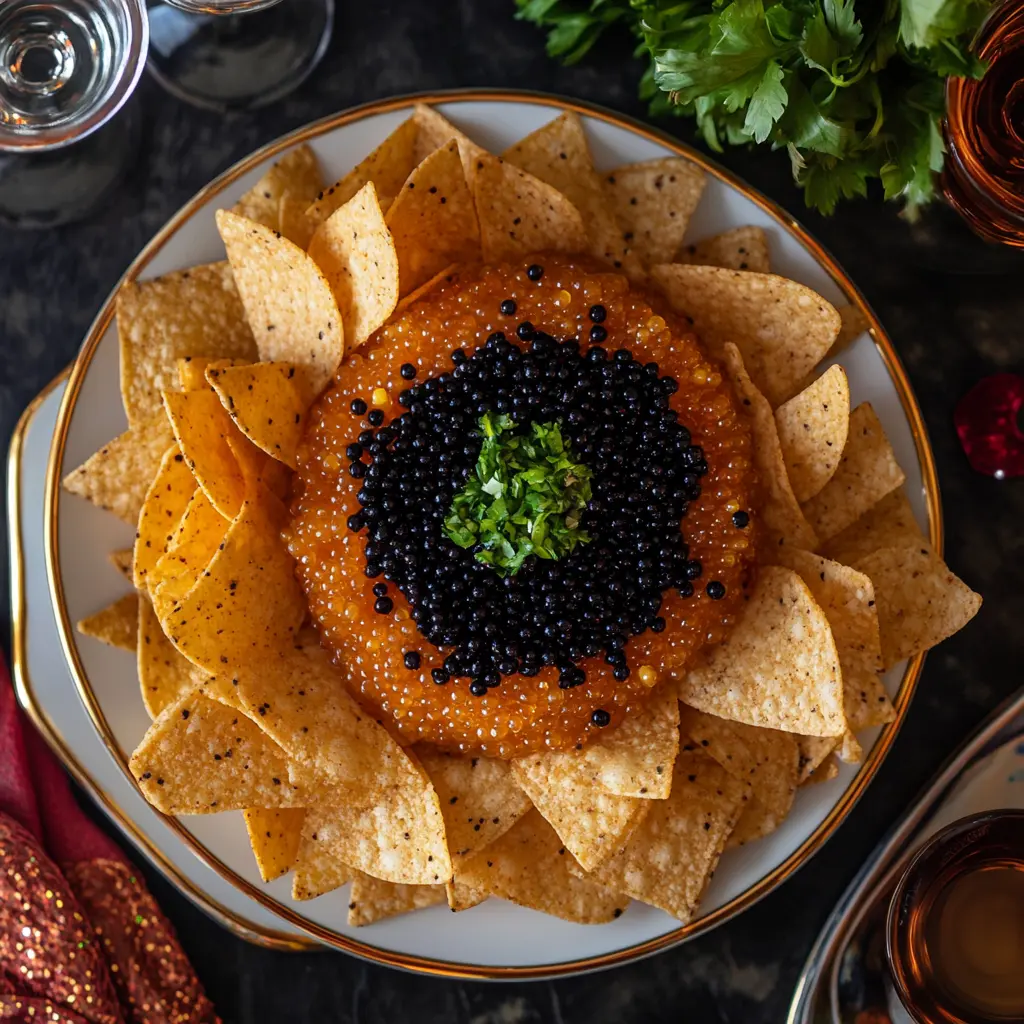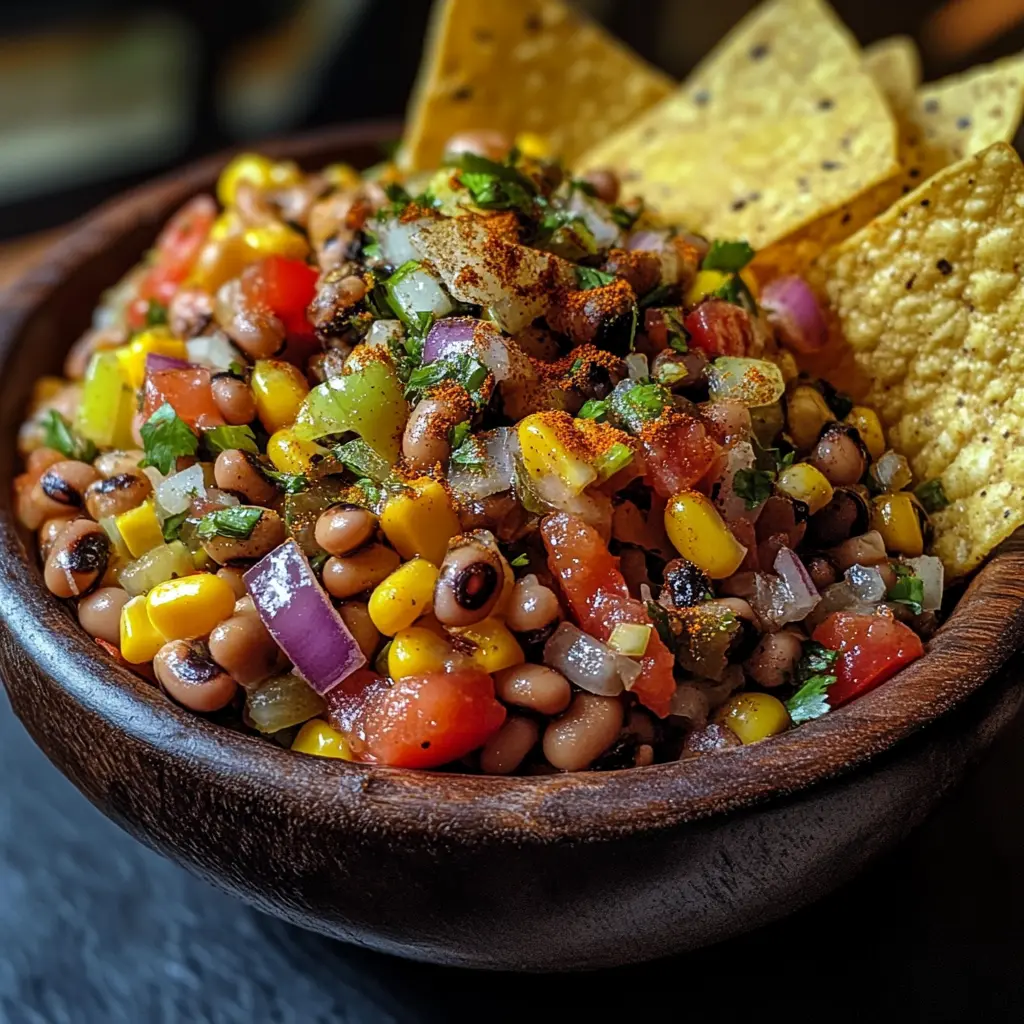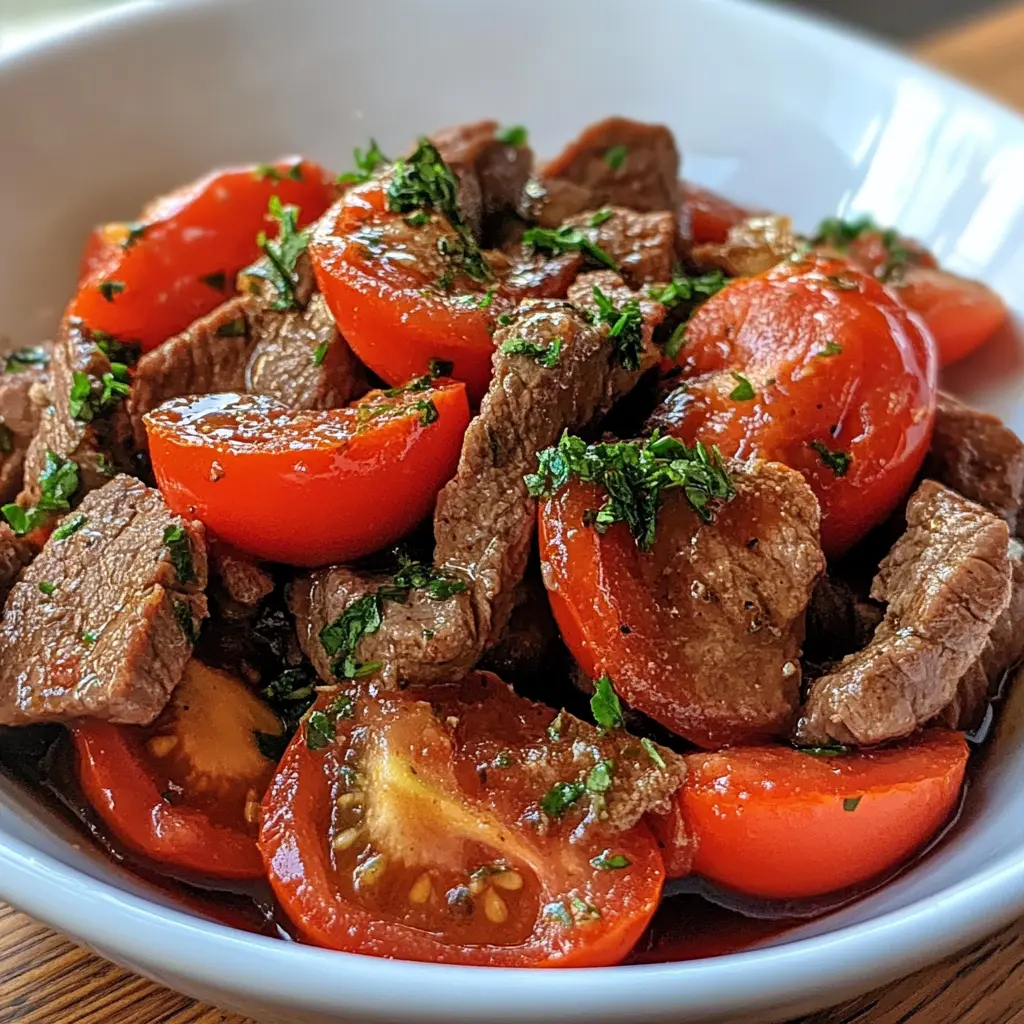If you’ve been searching for a zesty, flavor-packed appetizer or a side dish that lights up the party table, this Cajun caviar recipe is your go-to solution. A Southern spin on the beloved cowboy caviar, Cajun caviar brings bold spices, crunchy veggies, and a medley of beans into one vibrant bowl of deliciousness.
Whether you’re hosting a backyard BBQ, meal prepping healthy lunches, or just want to snack on something satisfying, Cajun caviar is everything you didn’t know you needed. Packed with protein, fiber, and tons of flavor, it’s a guilt-free dish that doesn’t skimp on taste.
Table of Contents
What Is Cajun Caviar?
Cajun caviar isn’t actual fish roe, nor is it anything fancy in the traditional sense. The term “caviar” here is playful—a nod to the luxurious look of the bean and veggie mix served cold, like its more expensive namesake. Cajun caviar is a Southern-inspired remix of the original cowboy caviar, a dish made popular in Texas and often enjoyed at summer cookouts.
Whereas cowboy caviar typically includes black-eyed peas, black beans, corn, and a vinegar-based dressing, Cajun caviar takes things up a notch with bold, spicy flavors inspired by Louisiana’s Creole and Cajun cooking. It reflects the culture’s love for heat, flavor layering, and a colorful plate.
This variation adds Cajun seasoning, hot sauce, and even some smoky elements that bring warmth and richness to every bite.
Ingredients Needed for the Perfect Cajun Caviar Recipe
Essential Base Ingredients (Black-Eyed Peas, Corn, Bell Peppers)
When you’re putting together a great Cajun caviar recipe, the base is everything. Think of it as a chunky salsa meets bean salad. The magic starts with simple pantry staples and fresh produce. Here’s what you’ll need for the foundation:
- Black-eyed peas (1 can or 1.5 cups cooked) – These protein-rich beans give the dish body and a soft bite.
- Corn kernels (1 cup) – Fresh, canned, or frozen will work. Grilled corn adds a smoky flavor that levels up the dish.
- Bell peppers (1/2 each of red, green, and yellow) – These bring sweetness, crunch, and vibrant color to every scoop.
- Red onion (1 small, finely chopped) – Adds sharpness and balance to the sweetness of the peppers and corn.
- Tomatoes (1 large or 2 small Roma, diced) – Choose firm, ripe tomatoes to keep your salsa chunky and not watery.
These ingredients make up the vibrant, textural base of Cajun caviar. Each plays a role in the flavor, color, and crunch factor—no soggy salads here.

Want to pair this with a hearty bowl? Check out the Outback Potato Soup – The Ultimate Creamy Comfort Bowl for a warm sidekick to this chilled dish.
Cajun Seasoning and Flavor-Boosters You Can’t Miss
Now, let’s talk flavor. What turns this into Cajun caviar? The seasoning blend.
A quality Cajun seasoning is key. While store-bought mixes work, a homemade version gives you full control over the spice level. Here’s a basic DIY Cajun blend:
- 1 tsp paprika
- 1/2 tsp cayenne pepper (adjust to taste)
- 1/2 tsp garlic powder
- 1/2 tsp onion powder
- 1/4 tsp oregano
- Salt and black pepper to taste
Besides the seasoning, don’t forget these flavor-packed add-ins:
- Olive oil (1/4 cup) – Smooths out the heat and acts as a base for the dressing.
- Red wine vinegar or apple cider vinegar (2 tbsp) – Brightens and balances the rich spices.
- Creole mustard (1 tbsp) – Brings that tangy Louisiana kick.
- Hot sauce (a few dashes) – Optional, but highly recommended if you love a little fire.
Want even more heat? Toss in sliced pickled jalapeños or a pinch of smoked paprika for depth.
And yes, this recipe is super flexible. You can adjust it based on your spice tolerance, available veggies, or dietary preferences.
In the next section, we’ll walk through the full preparation process—how to bring all these Cajun ingredients together into one irresistible bowl of flavor.
How to Make Cajun Caviar from Scratch
Step-by-Step Cajun Caviar Preparation
Making Cajun caviar is surprisingly simple. You don’t need fancy tools or advanced cooking skills—just a good knife, a big mixing bowl, and a love for bold flavors.
Here’s a straightforward step-by-step guide:
Step 1: Prep the veggies and beans
Drain and rinse your black-eyed peas and corn if using canned. Dice your bell peppers, tomatoes, and red onion into small, even pieces. Uniform cuts make it easier to scoop and ensure balanced bites.
Step 2: Mix your base
In a large bowl, combine your black-eyed peas, corn, diced peppers, onions, and tomatoes. Gently toss with a spatula or large spoon.
Step 3: Make the Cajun vinaigrette
In a separate small bowl or jar, whisk together:
- ¼ cup olive oil
- 2 tbsp vinegar
- 1 tbsp Creole mustard
- Cajun seasoning (start with 1 tsp and add more to taste)
- Optional: a few dashes of hot sauce


Step 4: Combine and chill
Pour the dressing over the bean-veggie mix. Stir well until everything is nicely coated. Cover and refrigerate for at least 1 hour—this lets the flavors blend beautifully.
Step 5: Serve it up
Serve chilled with tortilla chips, crackers, or over leafy greens as a salad. You can also scoop it onto tacos, pair it with grilled chicken, or eat it by the spoonful. No judgment here.
Looking for something sweet to balance that heat? Don’t miss our Chocolate Chip Bagel – The Best Homemade Recipe You’ll Ever Bake.
Pro Tips for Balancing Spice, Acidity, and Texture
Even though the recipe is simple, the little details make a big difference. Here are a few chef-approved tricks:
- Adjust the heat based on your audience. Cajun spice is bold—if you’re serving kids or spice-sensitive guests, go lighter on the cayenne or hot sauce.
- Use fresh lime juice as a finishing touch. A squeeze right before serving can brighten up all the earthy bean flavors.
- Add a creamy element like diced avocado or crumbled feta just before serving. This helps balance the tang and spice with something smooth.
- Let it sit overnight. Cajun caviar tastes even better the next day after everything marinates. It’s a meal-prep dream.
- Don’t overmix. Stir just enough to coat everything without turning your beans into mush.
Cajun Caviar Recipe Variations to Try
Spicy Cajun Caviar with Jalapeños and Hot Sauce
If you’re someone who lives for the heat, this variation is going to be your jam. Spicy Cajun caviar leans heavily on Southern heat by adding a few fiery upgrades:
- Fresh jalapeños or serrano peppers: Thinly sliced for a sharp, fresh kick. If you like things even hotter, keep the seeds.
- Smoked paprika: Adds a rich, smoky undertone that plays beautifully with spicy elements.
- Extra dashes of hot sauce: Louisiana hot sauce, Tabasco, or even chipotle hot sauce works great. Start slow—you can always add more.
Want to amp it up even more? Add cajun andouille sausage slices, pan-seared and cooled, for a protein-packed and fiery twist on the original.
For texture lovers, add a handful of crushed spicy corn chips just before serving. They add an amazing crunch and an extra layer of flavor.
Vegan & Gluten-Free Cajun Caviar Alternatives
One of the best things about Cajun caviar is that it’s already naturally vegan and gluten-free—but you can tweak it even further to fit dietary needs.
Here’s how to make it 100% allergy-friendly and plant-powered:
- Use avocado oil instead of olive oil for a neutral taste and a higher smoke point.
- Swap Creole mustard with stone-ground mustard if you need a vinegar-free option.
- Add diced avocado, cucumbers, or hearts of palm to bulk it up with clean, plant-based nutrition.
- For added texture and protein, mix in quinoa or edamame.
- Looking for a low-sodium version? Use no-salt canned beans and make your own spice mix without added salt.
This version keeps the Cajun soul but tailors it for clean eaters, vegans, and anyone dodging gluten or additives.
Each of these Cajun caviar recipe variations brings something new to the table—so don’t be afraid to mix, match, and make it your own.
Best Ways to Serve Cajun Caviar
As a Dip with Chips or Crackers
Hands down, the most popular way to enjoy Cajun caviar is as a dip. It’s cold, crunchy, and packs a spicy punch that pairs perfectly with:
- Tortilla chips (especially lime-flavored or blue corn)
- Pita chips for a thicker, toasted bite
- Ritz or saltine crackers
- Plantain chips for a sweet and salty combo
Pro tip: If you’re hosting a gathering, serve it in a large shallow bowl with chips circled around the rim. This not only looks amazing—it encourages people to dive right in.
To keep things from getting soggy, drain any excess liquid before serving, especially if it’s been chilling for a while.

Want a hearty side to go along with your dip platter? Discover great ideas like Outback Potato Soup – The Ultimate Creamy Comfort Bowl You’ll Love.
As a Side Dish or Salad Topper
Cajun caviar doesn’t just shine as a party dip—it’s also a killer side dish or salad topper.
Here are a few fresh ideas:
- Serve over a bed of baby spinach or arugula for a bold bean salad.
- Scoop onto tacos or burritos as a juicy, spicy veggie filling.
- Pair with grilled meats like chicken, shrimp, or steak as a zesty side.
- Use it in wraps or sandwiches as a chunky salsa-style filler.
It also works beautifully in meal prep bowls. Just layer with rice, leafy greens, and avocado. Boom—you’ve got a fiber-rich, flavor-loaded lunch that keeps well all week.
And yes—it travels well, making it ideal for picnics, work lunches, or road trip snacks. Just don’t forget the napkins.
Nutritional Value and Health Benefits
Is Cajun Caviar Healthy? Nutritional Breakdown
You bet it is. One of the reasons the Cajun caviar recipe has become such a hit—aside from how insanely good it tastes—is that it’s packed with nutrition.
Let’s look at what you’re getting in a 1-cup serving (estimated, depending on your variation):
| Nutrient | Approximate Amount |
|---|---|
| Calories | 150–180 kcal |
| Protein | 6–8g |
| Fiber | 6–10g |
| Carbs | 18–22g |
| Fat | 7–10g (mostly healthy fats) |
| Sodium | Depends on dressing/salt used |
Why it’s healthy:
- High in fiber: Thanks to beans, corn, and fresh veggies.
- Rich in plant protein: Ideal for meatless meals.
- Good fats from olive or avocado oil: These help lower inflammation and support heart health.
- Low in added sugar: Most recipes skip sweeteners altogether.
- Gluten-free and dairy-free by default.
So if you’re reaching for something to snack on, scoop onto salads, or enjoy as a side—this is way better than processed options.
High-Fiber, Protein-Rich, and Low-Calorie Advantages
What really gives Cajun caviar the edge is how it delivers on flavor and nutrition without loading you up on calories or sodium.
High-fiber foods like black-eyed peas and corn help regulate digestion, keep you full longer, and stabilize blood sugar. This makes Cajun caviar a perfect companion for those trying to:
- Lose weight
- Boost gut health
- Improve energy levels without processed snacks
Plus, if you’re plant-based or just trying to cut back on meat, this recipe gives you a solid protein boost from legumes, making it a smart swap for heavier mains.
And hey, unlike regular caviar—which can cost a small fortune and is high in sodium—Cajun caviar is budget-friendly, easy to make, and surprisingly light.
Common Substitutes and Additions
What Can You Substitute for Black-Eyed Peas?
Black-eyed peas are the traditional base in both cowboy and Cajun caviar. But if you can’t find them or simply want a change, don’t worry—there are plenty of great bean swaps that keep the integrity and texture intact.
Here are some excellent substitutes:
- Black beans – Mild and meaty, a natural fit in any Southwestern dish.
- Pinto beans – Slightly creamy and nutty, great for texture contrast.
- Chickpeas – A bit firmer but perfect for bite and protein.
- White beans (like navy or great northern) – Milder flavor, softer texture.
Each of these will maintain the high protein and fiber profile that makes Cajun caviar so satisfying.
You can even mix and match two types of beans for extra depth and color. Just be sure to rinse canned beans well to remove excess salt and starch.
FAQs About Cajun Caviar
What is Cajun Caviar?
Cajun caviar is a Southern-style bean and veggie salad that draws flavor inspiration from Cajun and Creole cuisine. Unlike fish-based caviar, this version combines ingredients like black-eyed peas, corn, bell peppers, and Cajun spices into a cold, zesty side dish or dip. It’s the spicy cousin of cowboy caviar, known for its bold heat, colorful appearance, and flexible serving options.
What does Louisiana caviar taste like?
Louisiana—or Cajun—caviar delivers a vibrant punch of savory, smoky, and spicy flavors. Expect a balance of:
- Earthy beans
- Sweet corn
- Tangy vinaigrette
- Fiery Cajun seasoning
It’s refreshing, a little fiery, and full of texture—equal parts crunchy, creamy, and satisfying.
What is a substitute for black-eyed peas in cowboy caviar?
If you don’t have black-eyed peas on hand, you can easily use:
- Black beans
- Chickpeas
- Pinto beans
- White beans These will keep the texture and nutrition intact while offering slight flavor differences. Make sure to rinse canned beans thoroughly before adding them to your dish.
Why is cowboy caviar called caviar?
It’s all about the look. Cowboy caviar (and its spicy Cajun spin) earned its name because the bean and corn mix resembles traditional fish caviar in appearance. It’s a fun, tongue-in-cheek name that adds a little Southern charm to a simple, budget-friendly recipe. No fish eggs involved—just down-home flavor with a playful name.
Want a fun, protein-rich recipe that’s just as surprising as Cajun caviar? Don’t miss our Angel Eggs Recipe – The Heavenly Twist on a Classic Favorite.
Final Thoughts & Tips for Making the Best Cajun Caviar
Tips for Storing & Meal-Prepping Cajun Caviar
One of the best things about Cajun caviar? It’s a meal prep superstar. This dish actually gets better as it sits—the flavors deepen, the veggies absorb the seasoning, and every bite becomes bolder.
Here’s how to make the most of your leftovers:
- Store it in an airtight container in the fridge. It’ll stay fresh for up to 4–5 days.
- Before serving again, give it a good stir and drain any excess liquid if it’s been sitting too long.
- If you’re planning to add avocado or other soft ingredients, wait until just before serving so they don’t turn mushy or brown.
- You can even portion Cajun caviar into small jars or containers for grab-and-go snacks or healthy lunches.
Perfect for BBQs, road trips, work lunches, or picnics—just pack a bag of chips and you’re all set.
Final Flavor Tweaks and Cajun Pairing Ideas
Want to keep things exciting every time you make it? Try these flavor tweaks:
- Add crumbled feta or cotija cheese for a creamy, salty layer.
- Sprinkle on crushed red pepper flakes or chipotle powder if you like it smoky and hot.
- Drizzle with fresh lime juice or balsamic glaze for a little acidity or sweetness.
- Use spicy pickled vegetables like okra or carrots for an extra Southern vibe.
Pair it with:
- Grilled chicken skewers
- Blackened shrimp
- Pulled pork sandwiches
- Veggie burgers
- Or just a tall glass of sweet tea






